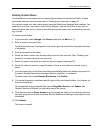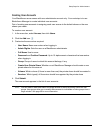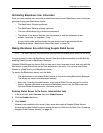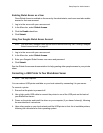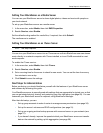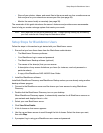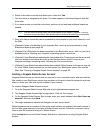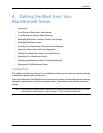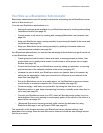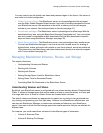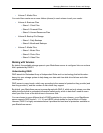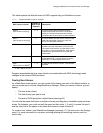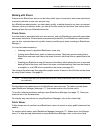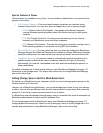
BlackArmor® NAS User Guide 28
Your Role as a BlackArmor Administrator
Your Role as a BlackArmor Administrator
BlackArmor administrators have full access to all features and settings on the BlackArmor server,
and to all files stored on it.
Your role as a BlackArmor administrator is to:
• Manage the storage space available on your
BlackArmor server by creating and modifying
volumes and shares
(see page 30).
• Control access to the server by creating and managing
BlackArmor user accounts
(see
page 36).
• Keep your
BlackArmor server running smoothly by monitoring the health of the server and
its disk drives
(see page 39).
• Keep your
BlackArmor server running smoothly by updating its firmware
when new
versions become available (see page 44).
As a
BlackArmor administrator, you can also take advantage of these features to get the most out
of your BlackArmor server:
• Create group accounts to make it faster and easier to manage access to shares. User
groups allow you to modify share access for individuals or entire groups from a single
window (see page 36).
• Protect the files stored on your BlackArmor server by setting up replication, or recurring
archive backups of the complete contents of the server (see page 37).
• Increase the rate at which your BlackArmor server can transfer data to the network by
setting up link aggregation, where you connect both LAN ports to your network at the
same time (see page 38).
• Set up the
BlackArmor
server as a media server, so that BlackArmor users can stream
music directly to a network computer with iTunes installed (see page 38).
• Conserve energy—and lower your power bill—by setting the disk drives in your
BlackArmor server to spin down (stop spinning) and enter a standby mode when they’re
not in use (see page 42).
• Connect your BlackArmor server to a UPS, which will provide enough power for you to
save whatever files you’re working on and properly power off the server in the event of a
power failure (see page 43).
• (Advanced) Ensure that incoming network traffic reaches its destination by using
BlackArmor Manager to set up Dynamic DNS (see page 42).
The remainder of this chapter describes your BlackArmor server’s default settings, then
describes how to change them and use other server features to build the data storage solution
that fits your needs.



